Introduction
The "Archives I" building, or the "National Archives", is located right in the heart of the US capital city, Washington D. C. , very close to the National Mall. It is one of the most important buildings and museums in the history of the United States of America and you will know the very reason why shortly.
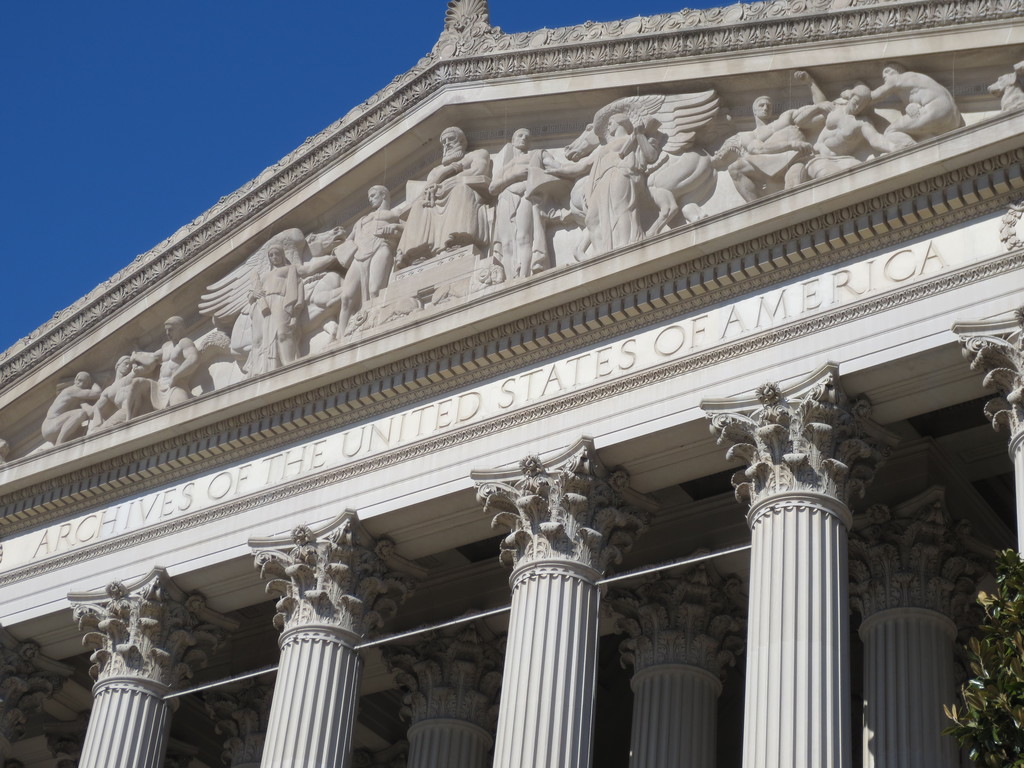
The building
Construction work on the building was completed in 1935, which serves as the original headquarters of the National Archives and Records Administration of the United States (also known by its acronym, NARA).
In the beginning, each branch of the United States government was in charge of administrating and protecting its own documents and records, but due to the mislaying or loss that took place, this agency was created to control them independently from one specific governmental branch.
This building, the one that houses the main governmental documents and records, was designed by the architect, John Russell Pope, who wanted the construction to reflect the importance of the documents that it contains; it's like a temple of the history of the United States of America, and, in my opinion, it reflects it rather well. From the outside, it looks like an imposing, classical building, of a style that mirrors a construction from Ancient Greece, but simple at the same time.
The main entrance is "guarded" by two statues. One of them has an inscription that reads, "Eternal vigilance is the price of liberty" (James Fraser, 2015), which I remember because it seemed like an expression with a lot of meaning behind it, and, because I also read it again inside the museum.
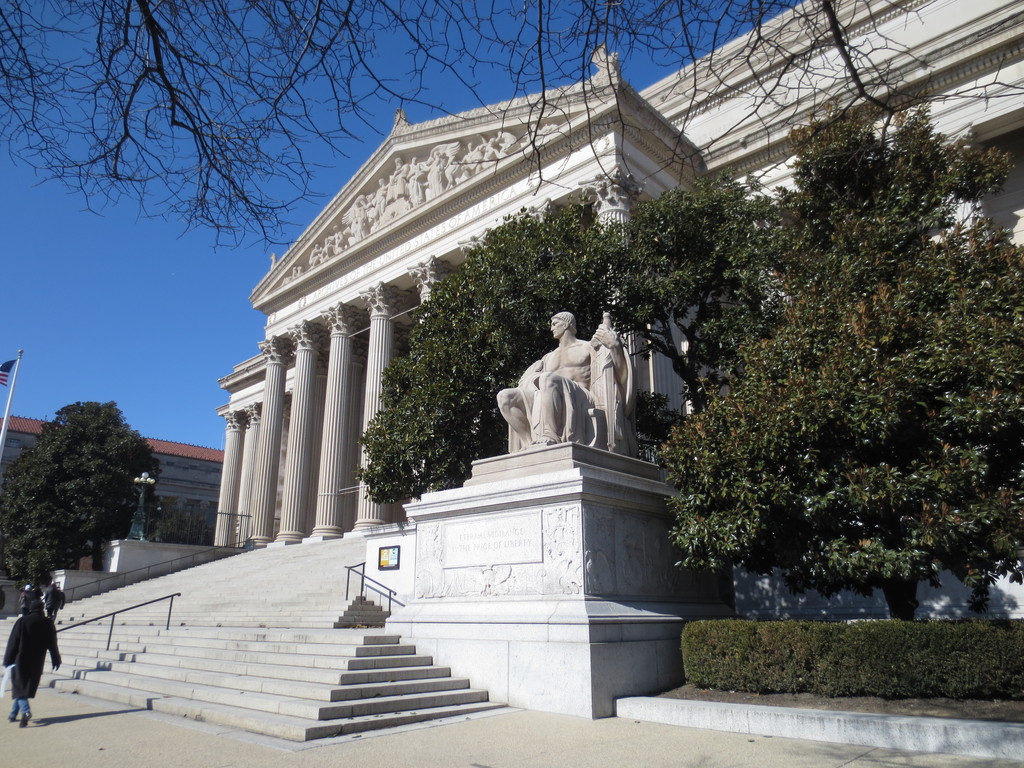
Besides, due to the lack of space, there is a second extension in College Park (University of Maryland), as well as twelve Regional Archives facilities across the United States and two big facilities in St. Louis, Missouri. However, this building, the one that I am going to talk to you about now, is, without a doubt, the most important of them all.
Museum
With regards to the organisation and the layout of the Archives Building's interior, I will tell you that it is split across three floors, and on each floor, between rooms and galleries.
On the ground floor, you will find the following rooms:
Orientation Plaza
This room is like an introduction to the museum, with several videos playing on each of the walls to give you some background information before your visit really begins.
David M. Rubenstein Gallery
This room houses additional information about the Record of Rights, in addition to further information and documents about the evolution that civil rights have had in the United States of America.
National Archives Store
This is the museum's gift shop where you can buy artefacts and souvenirs related to the museum. However, if I was to be completely honest, there isn't much that's really worth buying.
Without a shadow of a doubt, the most important room in the museum is the Rotunda for the Charters of Freedom, which is located on the top floor of the buildings and is of a semi-circular shape. When you enter the Rotunda, all the signs point towards the fact that you are about to see something really important, both in terms of decoration as well as the bars, the security guards, and even the atmosphere. On one of the numerous information stands in the room, they tell you the reason why the room is so cold and dark, which is an important detail in itself - it's nothing more than to help preserve the documents for as long as possible. I guess that it's for this very reason that they don't allow you to take photos whilst inside the museum, which, although understandable, is a massive shame.
It's in this very room that you will find the three single most important documents in the history of the United States of America, which, when grouped together, are known as "The Charters of Freedom":
The Declaration of Independence
Signed in 1776, this document announced the independence of the Thirteen Colonies then at war with the Kingdom of Great Britain, after the British defeat in the American War of Independence, as well as the first collective step toward, what is now known as, the United States of America. Within the document, the most important ideals of the Revolution are formulated: liberty, the right to self-determination, and equality. The document is found in a specially sealed case that contains inert argon gas with a controlled amount of humidity in order to maintain the flexible parchment.
The United States Constitution
This document is one of the most influential legal documents of all time, and has served as a model for those of more than one hundred other countries. It was signed in 1787.
The Bill of Rights
This document contains the first ten amendments to the United States Constitution. It originally contained twelve, but only ten amendments were ratified. It has come to be a detailed explanation of fundamental human rights.
Besides these aforementioned groundbreaking documents, there is also a large amount of information exhibited here, which you can read whilst visiting the room housing The Charters of Freedom. There is information about important figures and this interesting historical period, amongst other things. There are also some very famous murals created by the artist, Barry Faulkner, that decorate the room.
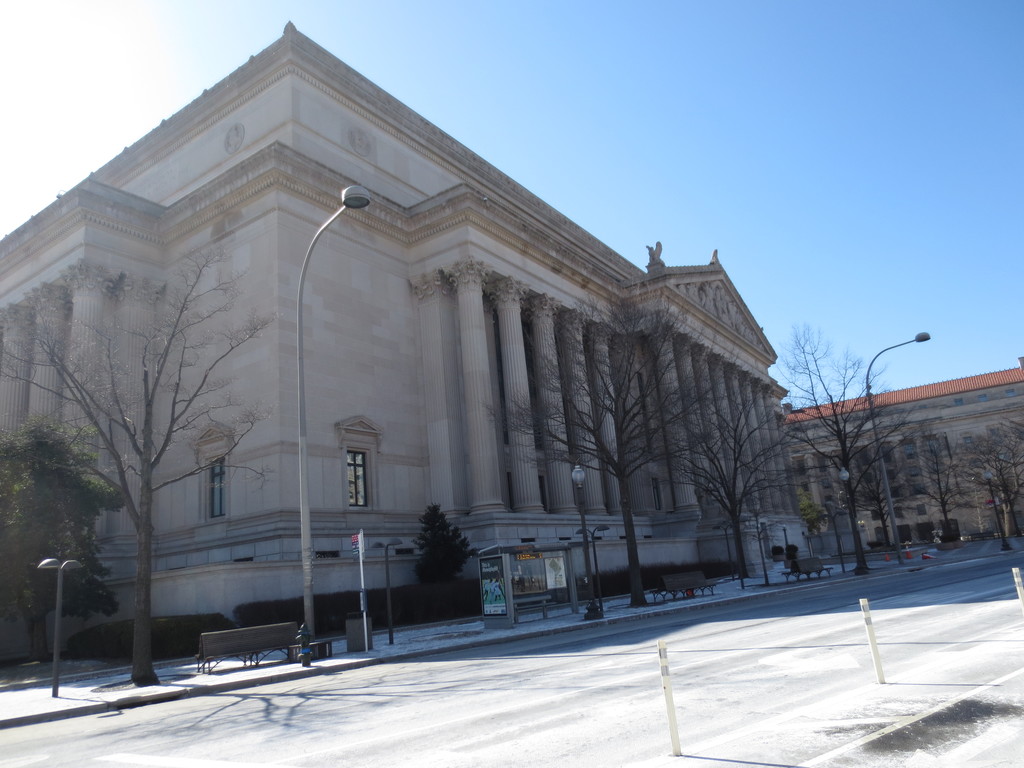
This is the room where most people congregate, and you have to join a special kind of queue (I say "kind" because people usually don't conform to it as such) to order to see the documents properly. Due to the fact that it is a small space and the number of visitors is substantial, the best thing to do is to go to the museum early and go directly to this room before it fills up. If not, it ends up being almost boring to visit because you can't read nor explore the room to your liking.
On the upper floor, you will also find the following rooms:
Boeing Learning Center
Within this room, there are activities for visitors of all ages to take part in and the sources that they have can be used, as well as staff being on hand to answer any questions that you may have about the museum. Inside, there is the ReSource Room, where you can find copies of the documents exhibited in the museum, amongst other items. This centre is open from Monday to Saturday, 10am to 4pm. Another interesting space is the Laboratory (Learning Lab), where students can put themselves in the shoes of archivists and researchers. However, in order to visit this space, a prior reservation must be made, which can be done by emailing [email protected].
Lawrence F. O'Brien Gallery
In this room, there are some display cabinets that house temporary exhibitions of the extraordinary records of the National Archives.
Public Vaults
This room is a permanent exhibition of different documents and important and interesting records, like President Abraham Lincoln's telegrams to his generals. Here, you will also find maps, drawings, photographs, etc. The records are also available in a digital format.
Presidential Conference Center
It's in this room where special events and conferences take place. In order to attend an event, you must check the calendar of events beforehand to see what they can offer on a certain date and at a certain time.
Although you cannot eat inside the museum, chewing gum included (which makes me laugh because they specify this in the majority of the museums here in D. C. ), there are toilets, drinkable water fountains, and a cafeteria, which is open from Monday to Friday, 10am to 2:30pm.
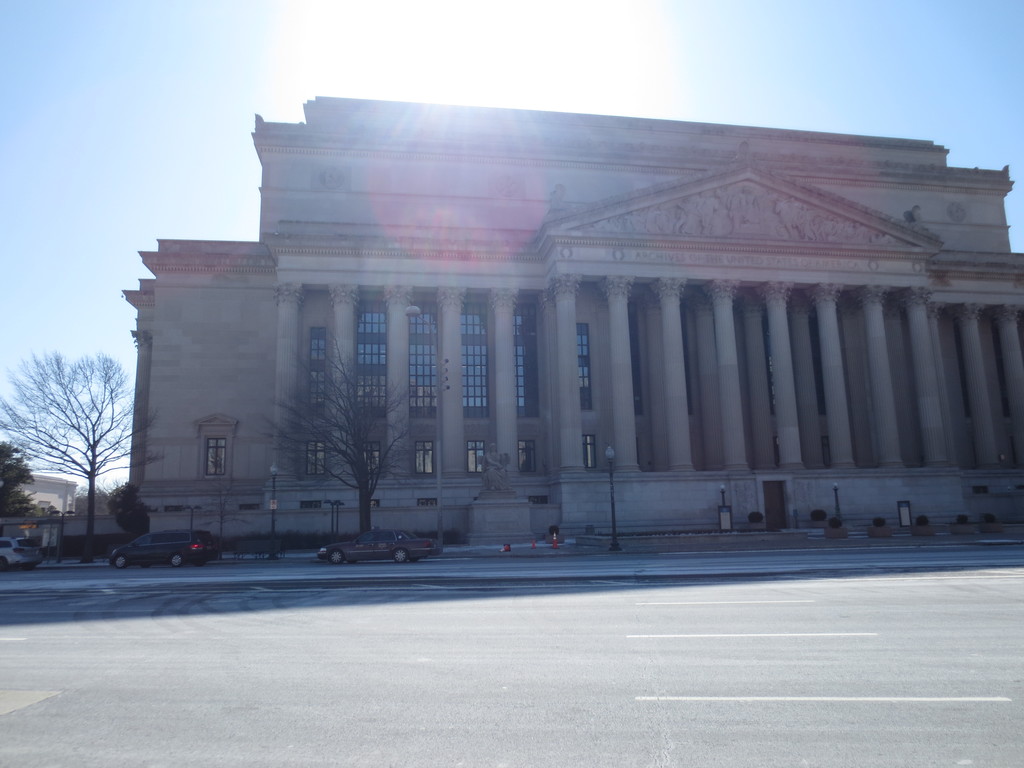
On the lower ground level, besides the cafeteria that I have just told you about, there is a theatre, the William G. McGowan Theater, where both events and conferences are held.
Opinion
In my honest opinion, the museum is really interesting, not only for the hidden treasures that it has about the country's history, but because it has photographs, press releases, videos and other relevant information to our time. It was here where I could watch Martin Luther King deliver his famous speech entitled "I Have a Dream... " in Washington's National Mall. I could also learn lots about the slave trade period, or how North American society has evolved over the years with regards to the societal roles of both women and African Americans.
Of course, you can also see the Emancipation Proclamation, which was the document that abolished slavery in the United States. I would highly recommend that you go and see it for yourselves, especially as they present the information to you in an interactive way with different colours and images, so that it doesn't bore you. Without a shadow of a doubt, I am going to go back to the museum and read everything that I couldn't read during my first visit.
Additional information
This museum has very similar opening hours to those of the rest of the museums in Washington D. C., operating from 10am until 5:30pm every single day of the year, except on Thanksgiving and Christmas Day.
Entry to the museum is free, as is the case in the majority of Washington D. C. 's museums. The latter is honestly one of my favourite things about living in the American capital, as I can see some of the most important documents in the country's very colourful history without having to pay a dime, so that means that I can also go back as many times as I would like.
Upon entering the museum, you have to go through a metal detector, and they explicitly tell you that you cannot use cameras during your visit, as well as outlining other important guidelines.
To get to the National Archives Building, you can either walk there from the National Mall (the main park in Washington D. C. ), or take the metro. If you choose the latter option, you must alight at the stop, "Archives Navy-Mem'l-Penn Quarter", served by the green and yellow lines, which will drop you off right outside the building.
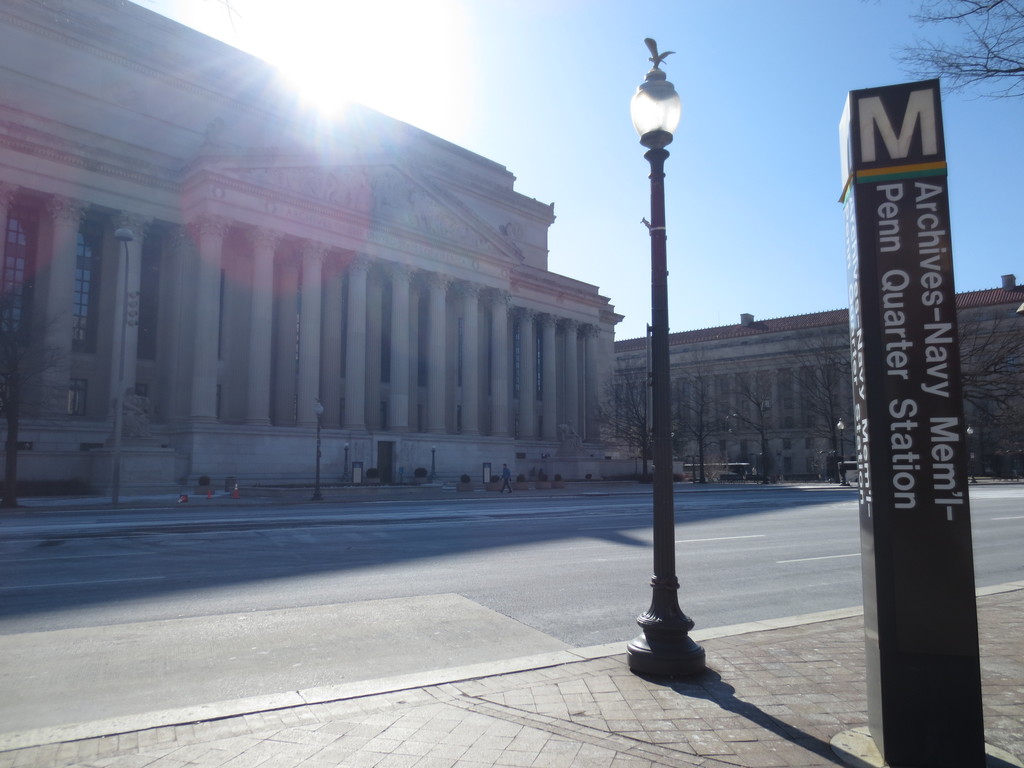
 What to see Washington,
Washington,
United States
What to see Washington,
Washington,
United States
























